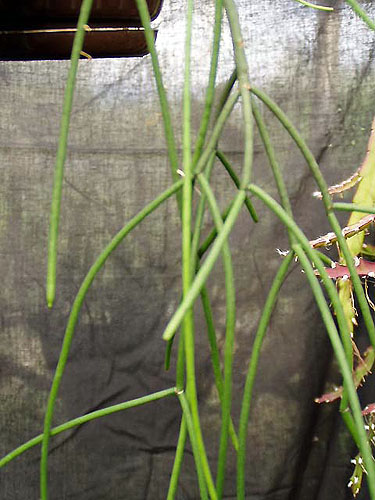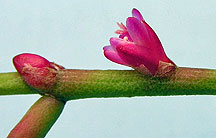|
|
||||||||
| R. hoelleri Barthlott and N P Taylor in Bradleya 13 (1995) | ||||||||
|
DISTRIBUTION. Brazil (S Espirito Santo): known only from the original collection. This remarkable new species is closely related to R. puniceodiscus, which apart from somewhat thinner stems, it strongly resembles in vegetative characters. It is the only species of Rhipsalis with intense carmine red flowers (superficially similar to those of the Bolivian Lepismium crenatum), and these are presumed to be an adaptation for pollination by hummingbirds. It was first collected and cultivated by the late Countess Orssich, who could not recall the precise locality details. It was sent to Bonn and has been in cultivation there since 1988, mainly flowering in Spring (April) and ripening its fruits slowly, these maturing by October. It is to be hoped that the species will be relocated in the field and its ecological data recorded. The epithet honours Gartenmeister Werner Holler, expert cultivator of Rhipsalideae at the Botanischer Garten der Universitat Bonn.
|
|||||||
| Copyright, Derek Butcher 12/2004 | ||||||||
 \
\